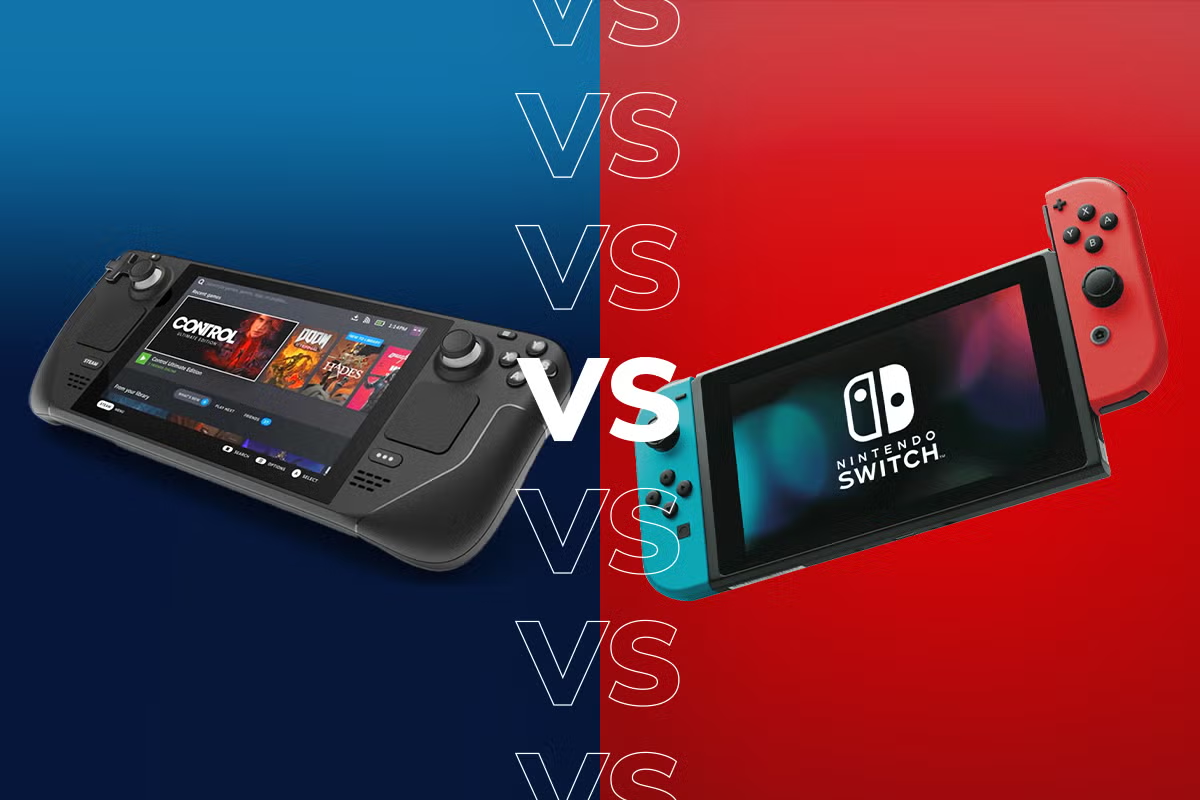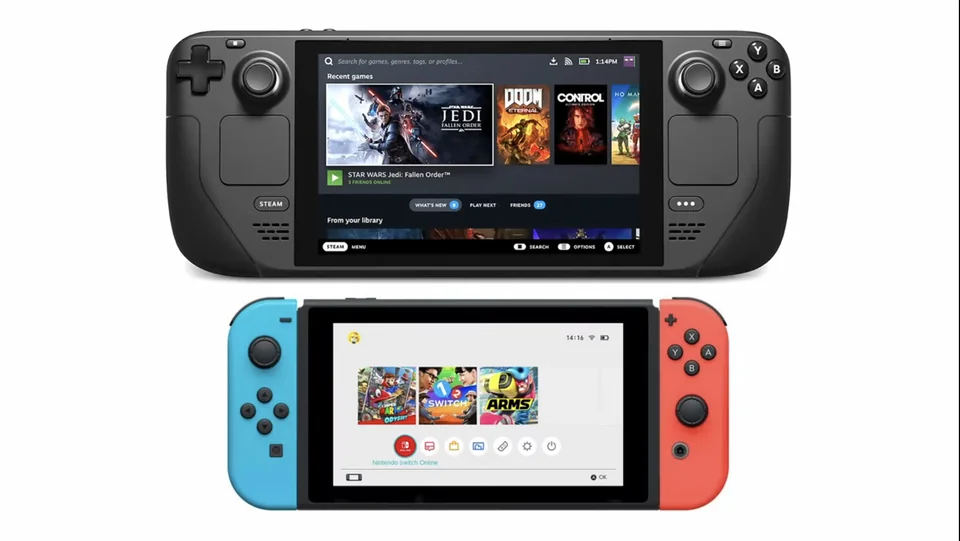Handheld gaming has never been more exciting, with two distinct champions vying for your attention: Valve’s Steam Deck and Nintendo’s beloved Switch. As we navigate through 2025, both devices represent fundamentally different philosophies in portable gaming, each offering unique advantages that cater to different types of gamers.
The Steam Deck emerges as a handheld PC powerhouse, delivering desktop-quality gaming experiences with its custom AMD Zen 2 processor and RDNA 2 graphics. This technical marvel allows you to access your entire Steam library, potentially containing hundreds of games accumulated over years of PC gaming. The device’s 7-inch display and robust hardware specifications make it capable of running demanding titles like Red Dead Redemption 2 and Cyberpunk 2077 with impressive visual fidelity.
Meanwhile, the Nintendo Switch continues to dominate with its exclusive game library and refined portable experience. Nintendo’s first-party titles like Mario, The Legend of Zelda, and the Metroid series remain unavailable elsewhere, creating a compelling ecosystem of critically acclaimed games that consistently achieve top Metacritic scores. The Switch’s lighter weight, longer battery life, and seamless docking functionality have established it as the gold standard for hybrid gaming.
The choice between these devices ultimately depends on your gaming preferences, existing library, and priorities regarding performance versus exclusivity. While the Steam Deck offers superior technical capabilities and access to decades of PC gaming, the Switch provides polished exclusives and a more streamlined portable experience that has millions worldwide.
Performance and Technical Specifications
The Steam Deck significantly outperforms the Nintendo Switch in raw computational power. Equipped with an AMD Zen 2 processor running at 2.4-3.5GHz and RDNA 2 graphics capable of up to 1.6 TFlops, the Steam Deck delivers substantially better performance than the Switch’s aging NVIDIA Tegra X1 processor.
This performance gap becomes evident when comparing games available on both platforms. The Witcher 3: Wild Hunt exemplifies this difference perfectly – while the Steam Deck runs the game smoothly with high visual fidelity, the Switch version operates at just 540p resolution with significantly reduced texture quality.
The Steam Deck also features 16GB of LPDDR5 RAM compared to the Switch’s more modest specifications, enabling better multitasking and smoother performance in demanding games. However, this superior performance comes at the cost of battery life, with the Steam Deck lasting 2-8 hours, depending on the game, while the Switch can achieve up to 9 hours of gameplay.
Game Libraries and Ecosystem

Nintendo Switch excels in exclusive content, offering access to beloved franchises that define Nintendo’s gaming legacy. These first-party titles consistently receive critical acclaim and represent experiences unavailable on any other platform. The Switch’s curated ecosystem ensures optimized performance and seamless integration between hardware and software.
The Steam Deck provides access to an extensive PC gaming library, with most Steam games being compatible with the device. This compatibility extends to older titles and indie games, offering incredible value for existing PC gamers. Additionally, the Steam Deck’s open architecture allows installation of other gaming platforms and even Windows, significantly expanding its versatility.
Design and Portability
The Nintendo Switch maintains advantages in portability and ergonomics. Weighing approximately 398g with Joy-Con controllers attached, it’s lighter than most alternatives. The Switch’s 6.2-inch screen strikes an optimal balance between visibility and portability, while its detachable Joy-Con controllers enable unique multiplayer scenarios.
The Steam Deck’s larger 7-inch display provides better visual immersion but results in a bulkier device. However, Valve has addressed portability concerns with improved carrying cases and enhanced build quality in newer OLED models.
Final Verdict and Recommendations
Choose the Steam Deck if you prioritize performance, have an existing Steam library, and want desktop-quality gaming on the go. It’s ideal for enthusiasts who value technical capabilities and game library flexibility.
Select the Nintendo Switch if you prefer exclusive Nintendo titles, prioritize battery life and portability, or want a more straightforward gaming experience. It’s perfect for casual gamers and Nintendo franchise enthusiasts.
Both devices serve different market segments effectively, and there’s room for both in today’s diverse gaming. Your choice should align with your gaming preferences, existing library, and portability requirements.




